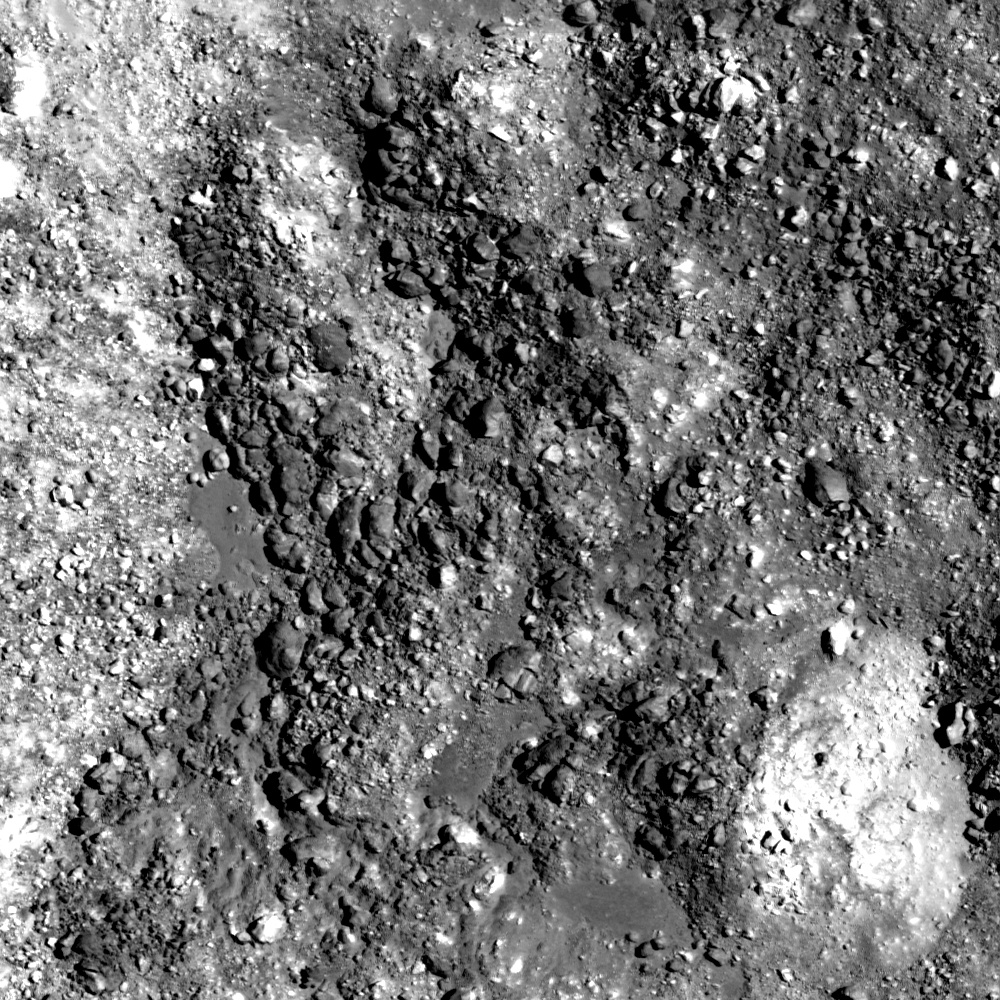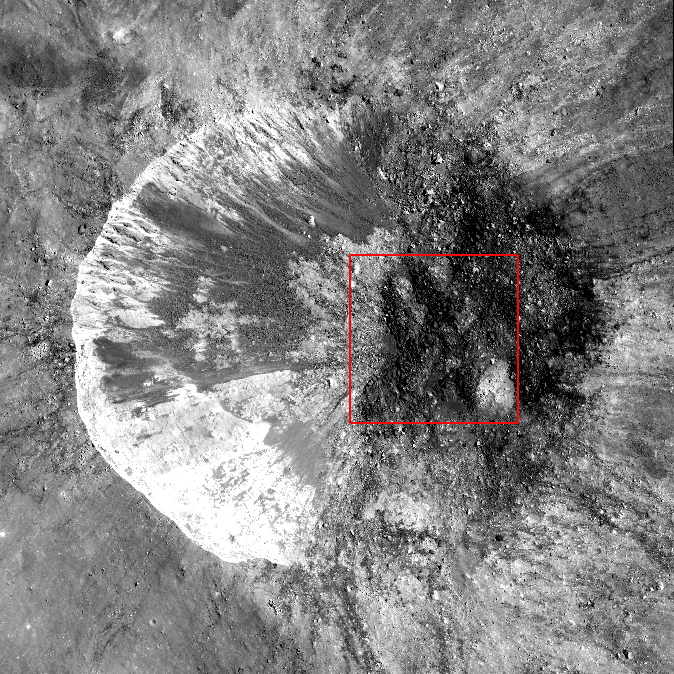
This rubble represents a portion of fall-back debris deposited shortly after crater formation, mixed with subsequent landslide debris, and partially covers the floor of a small, fresh crater located near Rocca crater in the Lunar Highlands. If you scan the expanded thumbnail image carefully, you may see what appears to be small deposits of impact melt nestled among the larger blocks and sediments ... or are these fine debris flow deposits? What clues would you look for to make the distinction?
If this loose rubble were to become buried, compacted, and lithified, we would call the resulting rock an impact breccia. Impact breccias are one of the features that geologists look for who study terrestrial impact sites, where often times all the other obvious crater features have been filled in and/or eroded away. Since there is no wind or water to erode or bury these deposits on the Moon, such features are perfectly preserved -- as if they had formed yesterday just after breakfast!
Explore the full NAC image below. Notice that the rubble pile is located off-center from the crater floor. Perhaps this was caused by a low-angle impact that resulted in an asymmetric debris cloud. Note also the dry debris flows cascading down the sloping crater walls. Does this finding effect your interpretation of the fine materials on the crater floor that look like impact melt?
Compare features on different crater floors in the following posts:
Published by James Ashley on 8 June 2011
